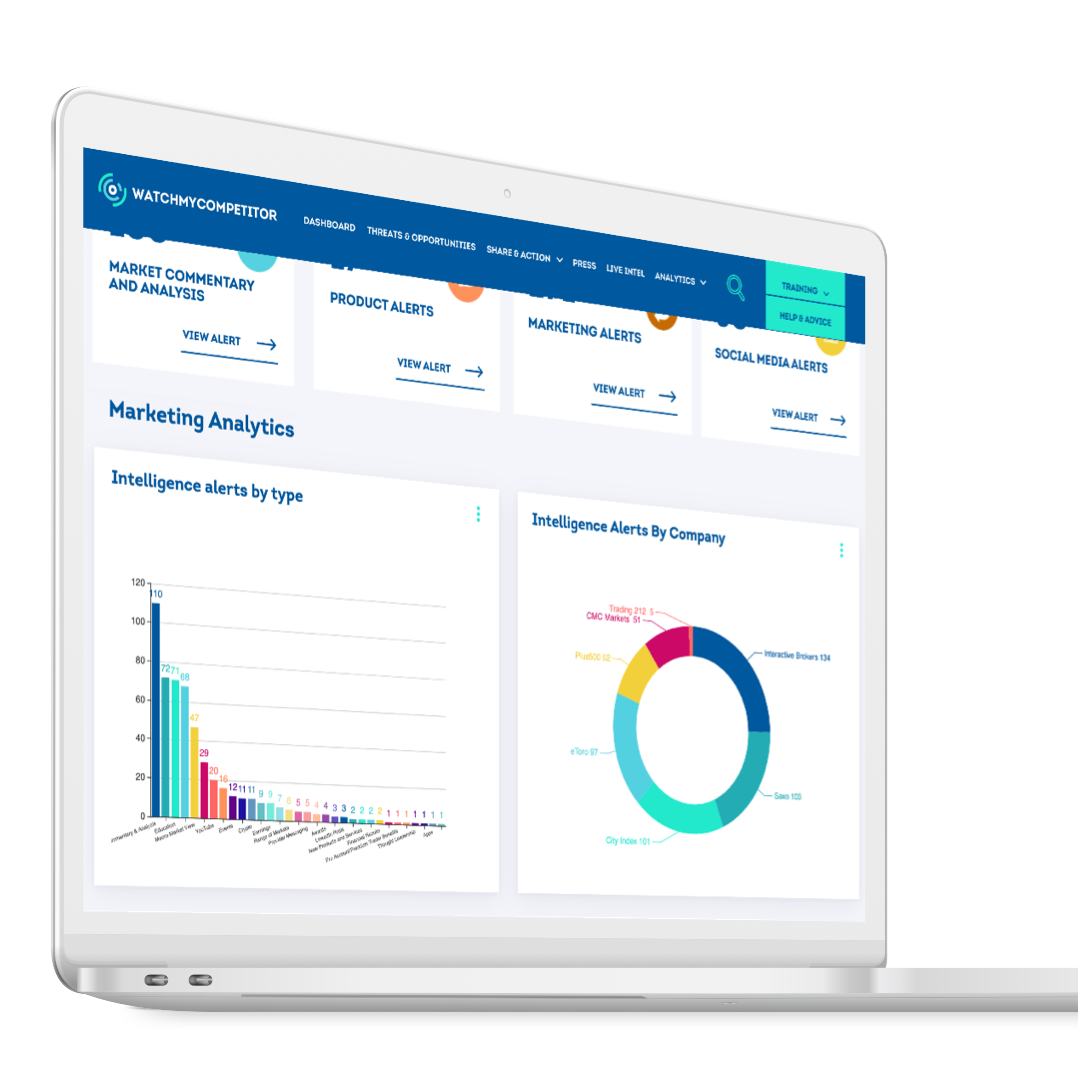Now, more than ever, a website is often the face of your small business. It’s where potential customers land, where leads are generated, and where conversions happen. But how do you know if your website is performing at its best? The answer lies in website data analytics.
In this article, we’ll explore the world of website data analytics, providing valuable insights and tips specifically tailored to small business owners. We’ll also be looking at WatchMyCompetitor’s content tracking capabilities, a tool designed to help small businesses navigate the complex realm of website data analytics.

Website Data Analytics: What Does It Mean?
Website data analytics is the process of collecting, measuring, and analysing data from a website in order to gain insights into how visitors interact with it. This data can be used to improve the website’s design, content, and functionality, and to track the effectiveness of marketing campaigns.
For small business owners, website data analytics can be a valuable tool for making informed decisions about their business. For example, data analytics can be used to:
- Identify the most popular pages on your website, so you can focus your content and marketing efforts on those pages.
- Track the sources of your website traffic, so you can see where your visitors are coming from and how they are finding your website.
- Understand how users interact with your website, so you can identify any areas that are confusing or frustrating them.
- Measure the effectiveness of your marketing campaigns, so you can see which ones are driving the most traffic and conversions.
Where To Begin With Website Data Analytics & Analysis?
Step 1: Choose the right tools
Before diving into website data analytics, you need the right tools in your arsenal.
Step 2: Access your data
Getting access to your website’s data is crucial. We’ll guide you through the process, ensuring you have all the necessary permissions and know-how.
Step 3: Seek relevant support
Not everyone is a data analytics expert, and that’s okay. Learn how to leverage freelancers or support services to assist you in the data-tracking journey.
Now that you have a foundation in place, let’s explore the nuts and bolts of analysing your website’s data.
How To Analyse Your Website’s Data
Website data analysis involves a series of steps, from collecting data to uncovering actionable insights. Here’s a step-by-step guide to help you make sense of your website’s data:
1) Collect data
Discover the essential data points to monitor and set up data collection tools. We’ll discuss the metrics that matter most for small businesses.
2) Track and review
Once the data starts rolling in, it’s time to track and review website data analytics key performance indicators. Drill down and make sense of the numbers and identify areas that need improvement.
3) Present to stakeholders
Communication is key. Learn how to present your findings to stakeholders, whether it’s your team or investors, in a way that drives action.
4) Find insights
Dig deeper into your data to find valuable insights. Uncover patterns, trends, and opportunities that can give your business a competitive edge.
5) Explore growth opportunities
Website data analytics tips aren’t just about maintaining the status quo. It’s about identifying growth opportunities and crafting strategies to achieve them.
Suggestions Regarding Website Analytics
We have listed the top suggestions to help you analyse competitor websites effectively. These tips can make a significant difference in your competitive intelligence efforts.
1) Competitor traffic analysis
This is one of the most important aspects of competitor website analysis. By understanding where your competitors are getting their traffic from, you can identify the most effective channels for your own marketing campaigns. You can use tools like SEMrush to track your competitors’ traffic sources, page views, bounce rate and other metrics.
2) Content tracking
It’s also important to track your competitors’ content changes. This can help you stay ahead of the curve and identify new opportunities to create content that your audience will find valuable. You can use tools like BuzzSumo or Ahrefs to track your competitors’ content, including the number of shares, backlinks and social media engagement.
3) Keyword insights
Keywords are essential for SEO, so it’s important to understand which keywords your competitors are targeting. This information can help you identify new keywords to target and improve your own SEO rankings. You can use tools like SEMrush or Ahrefs to research your competitors’ keywords.
4) User experience
Finally, it’s important to consider the user experience of your competitors’ websites. This includes factors such as the website’s design, navigation and loading speed. By understanding what your competitors are doing well and where they can improve, you can create a better user experience for your own website.
There are many other ways to analyse competitor websites. The best approach will vary depending on your specific business and goals. However, by following these tips, you can gain valuable insights that can help you improve your own website and marketing strategies.
How WatchMyCompetitor Can Help Small Businesses
Now that you have a solid grasp of website data analytics, it’s time to explore WatchMyCompetitor (WMC), a powerful tool designed to simplify website data analytics and can support you business with the following:
- Content tracking: WMC allows you to effortlessly monitor changes on your competitors’ websites, helping you stay in the know about their strategies.
- Competitor benchmarking: Compare your website’s performance with your competitors to identify areas for improvement.
- Actionable insights: WMC provides you with actionable insights based on competitor data, enabling you to make data-driven decisions.
- User-Friendly Interface: You don’t need to be a data expert to use WMC. Its user-friendly interface makes website data analytics accessible to everyone.
With WatchMyCompetitor by your side, you’ll be well-equipped to navigate the dynamic world of website data analytics and gain a competitive edge.
Final Thoughts
Website data analytics is not just a passive tool; it’s a dynamic force that empowers you to take charge of your online ventures. By diligently collecting, measuring, and analysing data from your website, you gain a profound understanding of how your audience interacts with your digital storefront. This insight is invaluable, as it forms the foundation upon which informed decisions can be made.
FAQs
What is website data analytics, and why is it important for small businesses?
Website data analytics involves analysing the data generated by your website to make informed decisions and drive growth. It’s crucial for small businesses as it helps in understanding customer behaviour, optimising marketing efforts, and staying competitive in the digital landscape.
How can I access and collect data from my website?
Accessing and collecting data from your website requires setting up tools like Google Analytics or using specialised platforms like WatchMyCompetitor. You’ll also need to ensure you have the necessary permissions to access your website’s data.
What are the key metrics I should track for my small business website?
Key metrics to track include website data analytics website traffic, conversion rates, bounce rates and user engagement. These metrics provide insights into your website’s performance and user behaviour.
Can I analyse my competitors’ websites without their knowledge?
Yes, you can analyse your competitors’ websites without their knowledge by using tools like WatchMyCompetitor. These tools allow you to monitor changes and gather data without direct interaction with your competitors.


